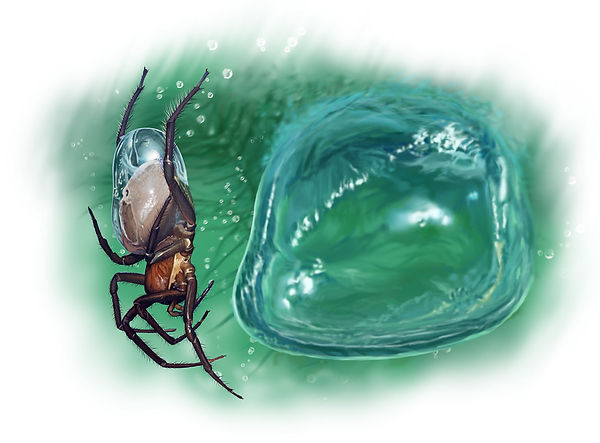Insect Illustrations by Vladimir Timokhanov (Almaty, Kazakhstan)
Entomological drawing continues to be important and often an irreplaceable means of illustrating insects and other minibeast, despite the existence of high-quality digital macro-photography. The original illustrations presented here were made by Vladimir Timokhanov, a professional animal illustrator and designer from Almaty (Kazakhstan). Vladimir started his professional career as an animal illustrator in 2002, when he was invited to illustrate the two-volume edition ‘Red data book of Kazakhstan’ (2006). Since then he has been constantly occupied with his beloved affair – entomological drawing, illustrating more and more natural history books, for instance, ‘Astonishing world of invertebrates’, ‘Through the pages of Red Data Book’, ‘Dangerous arthropods of Kazakhstan’, ‘Ants, mantids and dragonflies’, and many others. He took part in a few UNESCO and IUCN projects, and prepared illustrations for a number of academic and popular journals, such as Tethys Entomological Research (Kazakhstan), Arthropoda Selecta (Russia), Biological Sciences Review (UK), etc.
We hope you will enjoy exploring a selection of Vladimir’s stunning artworks.

Honey Bee (Apis mellifera), workers on combs.
© Vladimir Timokhanov.

Old World Swallowtail (Papilio machaon), a spectacular resident butterfly of the British fauna. Read more here.
© Vladimir Timokhanov.

Red Assassin Bug (Rhynocoris iracundus), from Kazakhstan; also a common European species.
© Vladimir Timokhanov.

Scorpion (Mesobuthus caucasicus), a common species known from the Caucasus to China.
© Vladimir Timokhanov.

Common Backswimmer (Notonecta glauca), a common aquatic bug swimming upside-down and known all over the British Isles. Read more here.
© Vladimir Timokhanov.

Saucer Bug (Ilyocoris cimicoides), a large predator bug (12-15 mm long) occurring in ponds, lakes and canals amongst dense vegetation across the UK. Read more here.
© Vladimir Timokhanov.

Giant Water Bug (Belostoma sp.), a large tropical predatory bug inhabiting permanent aquatic habitats, especially weedy ponds. The female lays her eggs on the male's back, and the male carries the eggs until nymphs hatch.
© Vladimir Timokhanov.

Scorpion (Orthochirus scrobiculosus) from Central Asia.
© Vladimir Timokhanov.

Water Scorpion (Nepa cinerea), a common British species. What looks like a scorpion-like tail is actually a breathing tube, acting as a snorkel in shallow water habitats. Read more here.
© Vladimir Timokhanov.

Common Yellow Jacket (Vespula vulgaris) on grapes; a common British species. Read more here.
© Vladimir Timokhanov.

Funnel-web Spider (Agelena orientalis), known from Italy to Central Asia. Read more here.
© Vladimir Timokhanov.

Orb-web Spider (Araneus angulatus), a British species that is confined to woodland and scrub habitats of the southern coast of England. Read more here.
© Vladimir Timokhanov.

Water Spider (Argyroneta aquatica), the only spider species which lives almost entirely under water. Read more here.
© Vladimir Timokhanov.

Common Bed Bug (Cimex lectularius), one of the world's most famous house pests. Read more here.
© Vladimir Timokhanov.

Scorpion (Euscorpius mingrelicus), known from southern Europe and Asia. Read more here.
© Vladimir Timokhanov.

Migratory Locust (Locusta migratoria), one of a few locust species renowned for the destructive impart of their swarms on croplands during outbreaks. Read more here and here.
© Vladimir Timokhanov.

White Widow Spider (Latrodectus pallidus), a close relative of the Black Widows, known from North Africa to Central Asia. Read more here.
© Vladimir Timokhanov.

Mediterranean Black Widow (Latrodectus tredecimguttatus), known from the Mediterranean to Central Asia, invasive in Japan. Its bites are toxic and could be dangerous to humans, especially to children. Read more here and here.
© Vladimir Timokhanov.

Jumping Spider (Philaeus chrysops), a common dweller of shrub-stony habitats from Europe to Central Asia.
© Vladimir Timokhanov.

False Black Widow (Steatoda paykulliana), one of the common and harmless British native species. It is believed that this species was introduced to the UK from southern Europe. Read more here.
© Vladimir Timokhanov.